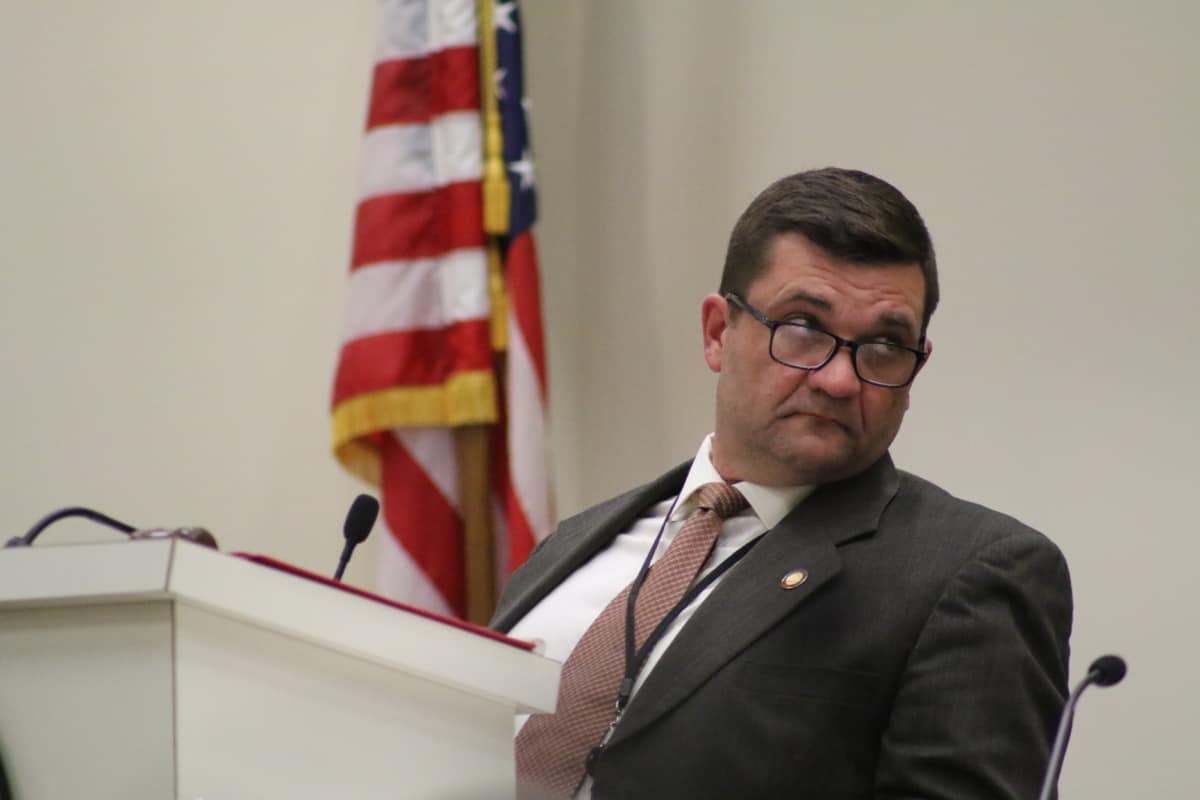A bill with recommendations from the House Select Committee on School Safety — including threat assessment teams for each school and school resource officer training — moved successfully through the House K-12 education committee Tuesday. The school safety committee was established after a mass shooting at a high school in Parkland, Florida, left 17 students and staff members dead in February 2018. The group met multiple times throughout last year and visited schools to study how to improve the physical and mental wellbeing of students and schools across the state.
“Mental health issues, threats, risk factors, brought immediate appropriations to LEAs in 2018. Today we have the opportunity, with the passage of this omnibus safety school bill … to continue to move forward,” said Rep. Donna McDowell White, R-Johnston. White is a primary sponsor of the bill along with Rep. John Torbett, R-Gaston, Rep. Craig Horn, R-Union, and Rep. Jeffrey Elmore, R-Wilkes.
House Bill 76 gives many policymaking and oversight responsibilities to the Center for Safer Schools, under the Department of Public Instruction. By the end of December 2019, the center must create policies for threat assessment teams. Unless a district superintendent chooses for a team to cover more than one school, each school must create a threat assessment team, which should consist of “persons with expertise in counseling, instruction, school administration, and law enforcement” to handle emergency situations. A school psychologist, according to the bill, should be on the team if available, but a general psychologist or psychiatrist can be included instead. Each team should provide information to students and staff around the recognition of threatening behavior.
If a threat occurs, the team is responsible for identifying the situation as a low, moderate, high, or imminent risk, and reporting its designation to the superintendent. The superintendent or a designated person must immediately notify a student’s parents. If the threat is determined to be imminent, the superintendent must notify the target of the threat and immediately notify the local law enforcement agency. The threat assessment team can also decide to refer the student to a local management entity or managed care organization so the student can be connected with appropriate mental health resources.
Each threat assessment team must report annual data to the Center for Safer Schools including the number of threat assessments done and demographic information on the assessments’ subjects, any high or imminent risk determinations, what actions were taken to respond to those determinations, and what results came of those actions. Each school also must report the dates and times of school safety exercises already required by law to the Center for Safer Schools.
The bill also requires every school to do vulnerability assessments each year with a vulnerability assessment tool that the center is tasked with creating. Legislative analysis staff said this idea, which will take the form of a checklist, came from visiting schools with frequent open or unlocked entrances.
The bill gives several other duties to the Center for Safer Schools, like providing training and professional development around school safety for public school employees, facilitating public-private partnerships to promote school safety, assisting law enforcement officers in active shooter response drills, and helping to develop training for school resource officers.
The bill requires the center to collaborate with the North Carolina Justice Academy, the North Carolina Criminal Justice Education and Training Standards Commission, and the North Carolina Sheriffs’ Education and Training Standards Commission to create and maintain training curriculum for school resource officers.
“We are requiring training not only in their law enforcement skills, but in three additional mental health related issues: disabilities, crisis intervention, and deescalation,” White said. Each school must report by Sept. 15 and each year going forward the number of school resource officers, the placement of the officer within the district, and the source of funding and method of employment for each officer. The center must report the school resource officer data to the Joint Legislative Education Oversight Committee by Nov. 15, and each year going forward.
The bill creates peer-to-peer student support programs for schools grades sixth and higher, managed by school counselors, that help students with things like “conflict resolution, general health and wellness, and mentoring.”
Rep. Charles Graham, D-Robeson, brought up concerns over funding for school support personnel. He said, throughout the school safety committee’s work, members heard from individuals about their roles in schools and about their challenges.
“One of them was ratios,” Graham said. “As we talk about school safety, and it’s been determined these folks can be an asset to our school assessment teams and an asset to the families and the children … Where are we going to address that issue of more resources, more of those professionals that, especially in rural counties, small school districts may need additional resources? And I’m talking specifically school psychologists, school counselors, social workers.”
Graham said the assessment teams seem like a good idea in the case of a threat, but said more support personnel could solve issues before students create unsafe situations.
“It’s good to refer them to mental health, but that’s not the catch-all,” Graham said. Elmore said those appropriations are still being determined.
The committee gave a favorable report to the bill, which will move to the rules committee. The committee also gave favorable reports to three other bills. House Bill 31 would allow Durham Public Schools to use land owned by the school district to provide affordable housing for teachers and other employees. House Bill 73 would require civic education in elementary, middle, and high schools’ standard courses of study. The topics, like respect for school personnel, responsibility for school safety, service to others, and good citizenship, were previously encouraged by law. House Bill 57 creates the term “public school unit” to describe all different types of public school districts and schools and makes technical corrections for better statute organization.
Earlier Tuesday morning, research division staff members presented to the Joint Appropriations on Education committee on how public schools are funded. See their presentations, which will continue Wednesday, here.
Two bills moved quickly through the House education standing committee on community colleges on Tuesday as well. Senate Bill 6 would allow the College of Albemarle in Elizabeth City to access funds from the Connect NC bond, which was already passed by voters. The community college would use the funds to expand in Dare County. The bill received a unanimous favorable report and now moves to the House capital appropriations committee.
The second piece of legislation, House Bill 8, would give in-state tuition to residents of certain counties in Georgia, allowing them to go to Tri-County Community College at a lower cost. North Georgia Technical College, said Rep. Kevin Corbin, R-Cherokee, already offers in-state tuition to North Carolina students.
Corbin said Tri-County Community College is “the only one whose neighboring college in another state offers in-state tuition for out-of-state students.” He said the Great Smoky Mountains isolate the far-Western region from the rest of the state and that residents of the area and those in Georgia are part of the same community.
“This is only eight miles from Georgia,” Corbin said. “You’re talking about a 10-minute drive.”
Corbin took the bill off the schedule last week and introduced a committee substitute this week to make the initiative a pilot program, which would end in the 2022-23 school year, and specify which counties in Georgia would be eligible. At the end of that period, the State Board of Community Colleges must report the program’s results to the Joint Legislative Education Oversight Committee and the fiscal research division. The study, the bill reads, would look at the following:
“This report shall include information about the number of out-of-state students who enrolled at the in-state tuition rate, the programs that these students chose, any programs unavailable to these students due to potential displacement of North Carolina residents, any indicators of increased economic development as a result of this program, and the number of out-of-state students enrolled who do not qualify for the in-state tuition rate.”
“When they come into North Carolina, they eat here, they shop here, and all that,” Corbin said. “… That would be hard to track but it won’t be hard to track, ‘Yes, we attract 100 students, 200 students, 500 students.’ We will know that.”
The bill received a unanimous favorable report and referral to the House committee on state/local government.



